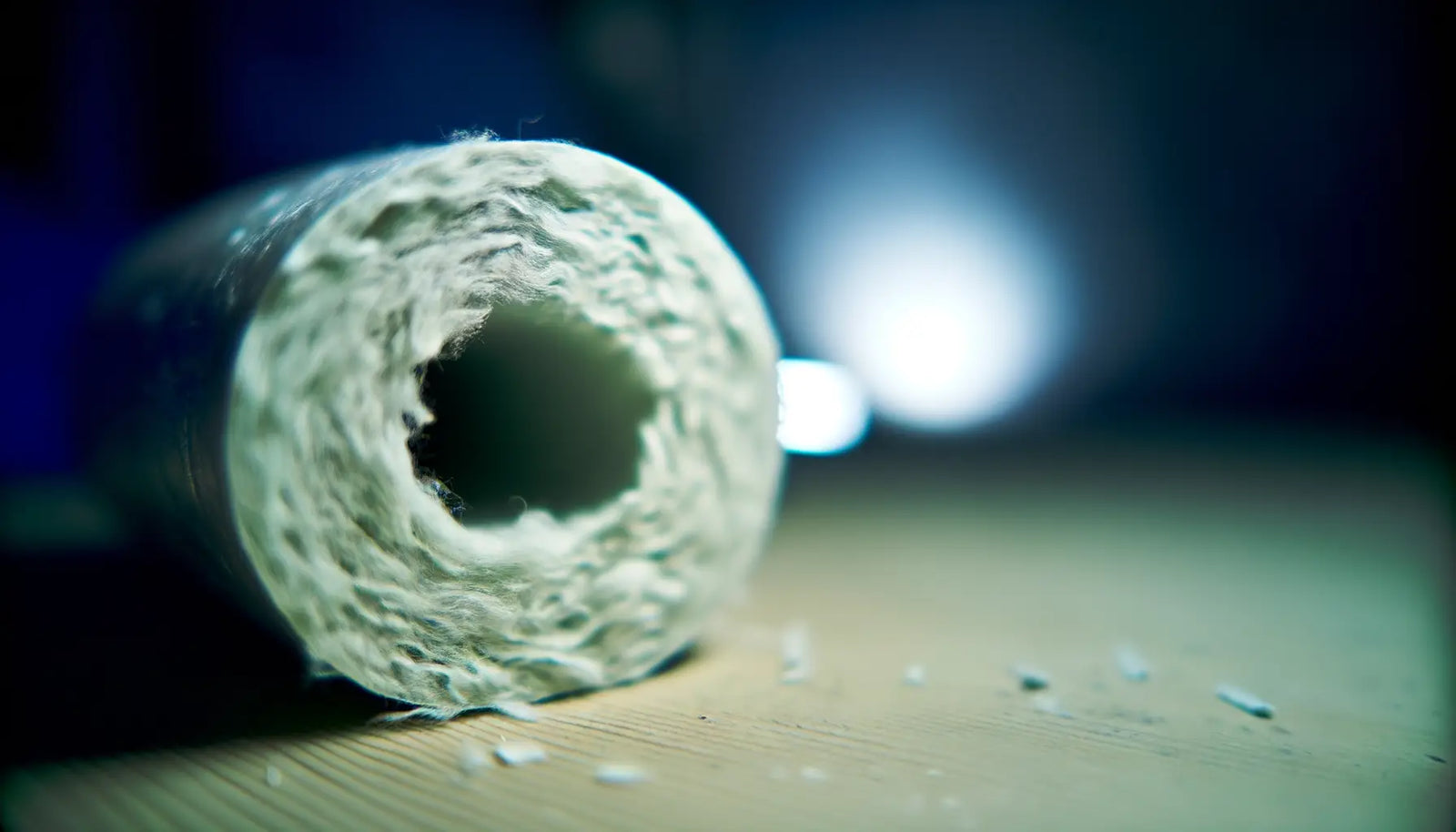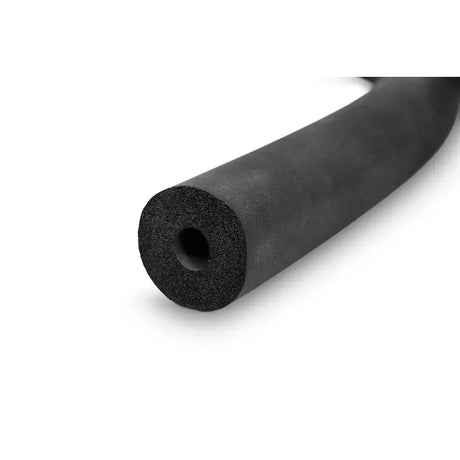Mineral wool insulation has long been a popular choice for homes and commercial buildings thanks to its effective fire resistance and thermal performance. However, some recent concerns over the potential health risks of mineral wool have sparked debate and raised the question: Is this common insulating material actually bad for your health? In this article, we'll take an in-depth look at mineral wool, exploring both its benefits and any possible downsides.
The short answer is, mineral wool insulation is considered safe for use in various applications as long as proper precautions are taken during handling, installation, and maintenance. It offers a combination of health benefits, such as thermal performance, fire resistance, sound control capabilities, and environmental friendliness. For the longer answer, read on.
Mineral wool, made from natural or synthetic minerals or metal oxides, has been a go-to insulation material for decades. Its ability to conserve energy, reduce utility bills, and enhance fire safety cannot be overstated. Yet, some reports suggest that handling and installing mineral wool could pose health risks, particularly due to the tiny fibers that can be inhaled. This brings us to a critical evaluation of whether these concerns are significant enough to outweigh its benefits.
What Is Mineral Wool?
Mineral wool is a non-metallic, inorganic insulation material manufactured from raw materials like stone or silica, which are heated until molten and then spun into a fibrous mat. This material offers exceptional thermal, fire, and acoustic properties due to its fibrous structure that prevents air movement and its inert chemical composition. Mineral wool is used for various applications such as thermal insulation, soundproofing, filtration, and as a growth medium in hydroponics. It is known by various names like mineral fiber, mineral cotton, man-made mineral fiber (MMMF), and man-made vitreous fiber (MMVF). Mineral wool is denser and heavier than glass wool, providing better sound insulation capabilities and superior fire resistance. It remains a resilient insulation material with an unchanged R-value over time and can withstand high temperatures without burning or releasing toxic gases.
Is Mineral Wool Dangerous?
Mineral wool insulation is considered safe when proper handling and installation practices are followed. Here are some key points regarding the health and safety aspects of mineral wool based on the search results:
-
Bio-solubility and Control: Mineral wool's safety is attributed to its man-made nature, allowing producers to control its chemical composition, fiber dimensions, and durability. This control enables quick natural clearance by the body if exposed, as the fibers are designed to be bio-soluble.
-
Regulatory Approval: Mineral wool insulation products meet high safety standards set by leading health and safety advisors and regulators like the World Health Organization and the European Union. They are considered safe for both work and living environments when recommended practices are followed.
-
Non-Carcinogenic: Mineral wool is not classified as a carcinogen in the EU, as it does not contain hazardous substances classified as carcinogenic, mutagenic, or toxic for reproduction. Major health organizations like the World Health Organization and governmental bodies do not classify mineral wool fibers used in insulation as carcinogenic to humans.
-
Fire Safety: Mineral wool products have excellent fire resistance properties, with most glass mineral wool products being non-combustible and having the highest Euroclass A1 fire rating classification. They do not produce toxic fumes in case of a fire, providing added safety in buildings.
What Makes Mineral Wool Controversial?
Mineral wool has been a subject of controversy primarily due to concerns related to its potential health risks and environmental impact. Here are some key points that contribute to the controversy surrounding mineral wool based on the search results:
-
Health Concerns: While mineral wool insulation is generally considered safe when properly handled, there have been concerns about potential health risks associated with exposure to mineral wool fibers. Some studies have raised questions about the inhalation of these fibers and their possible effects on respiratory health, although long-term studies have not found a significant link between mineral wool insulation fibers and lung disease.
-
Environmental Impact: Mineral wool is non-biodegradable, which raises concerns about its impact on the environment, especially in terms of disposal and waste management. This has led to the development of substitute materials like hemp, flax, wool, wood, and cork insulations that offer biodegradability and potentially lower environmental impact compared to mineral wool.
-
Perceived Safety: Despite scientific evidence supporting the safety of mineral wool insulation products when used correctly, there may still be public perception issues or misconceptions regarding their safety. Ensuring proper handling, installation, and maintenance practices are crucial to mitigate any potential risks associated with mineral wool.
Alternative Insulation Options
Here are some common materials that serve as good alternatives to mineral wool insulation, along with reasons for their suitability:
-
Foam Plastic Insulation: Foam plastic insulation materials like phenolic foam (PF), polyisocyanurate (PIR), extruded polystyrene (XPS), expanded polystyrene (EPS), and spray foam offer good thermal insulation properties. They are lightweight, easy to install, and provide effective barriers against heat loss or gain. However, they may not be as environmentally friendly as natural alternatives like sheep's wool or hemp wool[3].
-
Fibreglass Insulation: Fibreglass insulation, also known as glass mineral wool insulation, is a popular choice due to its outstanding thermal and acoustic insulation properties. It is lightweight, easy to install, and cost-effective. Fibreglass insulation helps regulate temperature, save energy costs, and reduce noise pollution in buildings[5].
-
Polystyrene Insulation: Polystyrene insulation comes in rigid boards or blocks and provides excellent thermal insulation properties. While it may reduce room size during installation, it offers effective heat retention capabilities. However, the production of polystyrene relies on fossil fuels, contributing to environmental concerns related to global warming[4].
-
Polyurethane Insulation: Polyurethane insulation, available in foam form, offers high thermal resistance and energy efficiency. It provides excellent insulation performance, moisture resistance, and can be applied as a spray foam for seamless coverage in various building structures. Polyurethane insulation helps reduce energy costs and enhances indoor comfort levels.
-
Elastomeric Insulation: Elastomeric insulation materials are flexible, durable, and resistant to moisture and weathering. They are commonly used for HVAC systems and piping insulation due to their ability to withstand varying temperatures and environmental conditions. Elastomeric insulation helps prevent condensation, energy loss, and corrosion in mechanical systems[4].
-
Nitrile Rubber Insulation: Nitrile rubber insulation is known for its excellent thermal properties, flexibility, and resistance to oil and chemicals. It is commonly used in HVAC applications where resistance to harsh environments is required. Nitrile rubber insulation provides effective thermal protection, sound absorption, and durability in demanding conditions[4].
-
Phenolic Insulation: Phenolic insulation materials offer high fire resistance, low thermal conductivity, and excellent moisture resistance properties. They are rigid foam boards that provide superior thermal performance while being lightweight and easy to install. Phenolic insulation is suitable for various applications requiring high-performance thermal insulation solutions[5].
These alternatives provide a diverse range of options with specific benefits such as thermal performance, durability, flexibility, moisture resistance, fire resistance, and ease of installation as substitutes for mineral wool insulation.
Conclusion
While there are legitimate concerns about the health risks associated with mineral wool, particularly regarding respiratory and skin irritation, it’s critical to consider both sides. Mineral wool offers significant benefits, mainly in thermal and fire insulation. Yet, if the health risks are a worry for you, exploring alternatives like polyurethane insulation could be a safer choice. Always ensure proper safety measures, like wearing masks and gloves, when working with any insulation to minimize risks.
Frequently Asked Questions
Is mineral wool bad for your health?
Mineral wool itself isn't "bad" for your health under normal conditions. However, handling or being exposed to its fibers without proper protection can lead to irritation of the skin, eyes, and respiratory system. Long-term exposure might carry more significant health risks, including chronic respiratory issues.
What precautions should I take when handling mineral wool?
When working with mineral wool, it's crucial to wear protective gear. This includes gloves to prevent skin irritation, a dust mask or respirator to avoid inhaling fibers, and safety goggles to protect your eyes. Ensuring good ventilation in the working area is also essential.
Are there safer alternatives to mineral wool for insulation?
Yes, there are safer alternatives to mineral wool, one of the most popular being polyurethane insulation. Products like Handi-Foam and Spray Foam Kits provide excellent insulation properties without the health concerns associated with mineral wool fibers.
Can mineral wool insulation cause long-term health issues?
There is some evidence to suggest that long-term exposure to mineral wool fibers might lead to chronic respiratory conditions. However, these risks are mostly associated with prolonged, unprotected exposure during manufacturing or installation processes.
How does mineral wool insulation compare to other materials in terms of efficiency?
Mineral wool offers excellent thermal and acoustic insulation, as well as remarkable fire resistance. It has a high R-value, making it very efficient in preventing heat loss or gain. While similar in efficiency, alternative materials like polyurethane have the added benefit of being less irritating to some individuals.
Is it expensive to switch from mineral wool to alternative insulation materials?
The cost of switching from mineral wool to alternatives like polyurethane insulation can vary. Factors include the size of the area to be insulated, the type of product chosen, and labor costs if professional installation is needed. Polyurethane products, while potentially higher in initial cost, often offer superior long-term savings due to their excellent insulation properties.
How can I safely remove mineral wool insulation from my home?
Safely removing mineral wool insulation requires protective gear, such as gloves, a respirator or mask, and safety goggles. It's essential to minimize the disturbance of the material to reduce fiber release into the air. Consider hiring a professional if you're unsure about the removal process, as they will have the necessary equipment and expertise to do the job safely.






